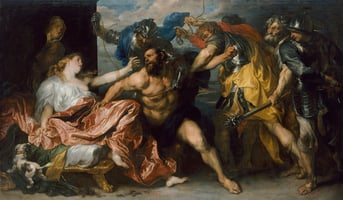Raimundo Madrazo (1841-1920) was a Spanish painter known for his portraits and religious scenes. He...
Vincent Van Gogh: An Artist Who Transcended Time and Place
Vincent Van Gogh (1853-1890) was a Dutch post-Impressionist painter whose work had a far-reaching influence on 20th century art, especially on Expressionism, Fauvism, and early abstraction. He is best known for his emotionally charged, often turbulent and emotionally charged paintings of peasant life and rural scenes. He was a prodigious and prolific artist, producing more than 2,000 works of art in his lifetime.
Van Gogh's work was heavily influenced by the Dutch Masters, as well as by the French Impressionists. He often used bright colors and bold brushstrokes to convey emotion, and his use of perspective, line, and composition were innovative for the time. His paintings often featured everyday people and scenes, often of rural life, and he sometimes used the same subject matter in different works to explore the same ideas.
Despite his success, Van Gogh struggled with mental illness and a lack of recognition during his lifetime. He was often seen as an eccentric, and his works were heavily criticized. Nevertheless, he is now considered one of the most influential painters of the 19th century and his works are highly prized by art collectors around the world.
Van Gogh's work has been appreciated for its emotional intensity and for its technical skill. His use of color and texture created a unique visual language that has been influential for generations of artists. His paintings often show a sense of motion and energy, and he often used light to create a sense of depth and atmosphere. He was also an accomplished draughtsman who was able to capture the movement of figures and objects with remarkable accuracy.
Van Gogh's influence is still evident in contemporary art, and his legacy continues to inspire artists around the world. His artwork has been exhibited in museums, galleries, and private collections around the globe, and his paintings continue to be some of the most recognizable works of art.




